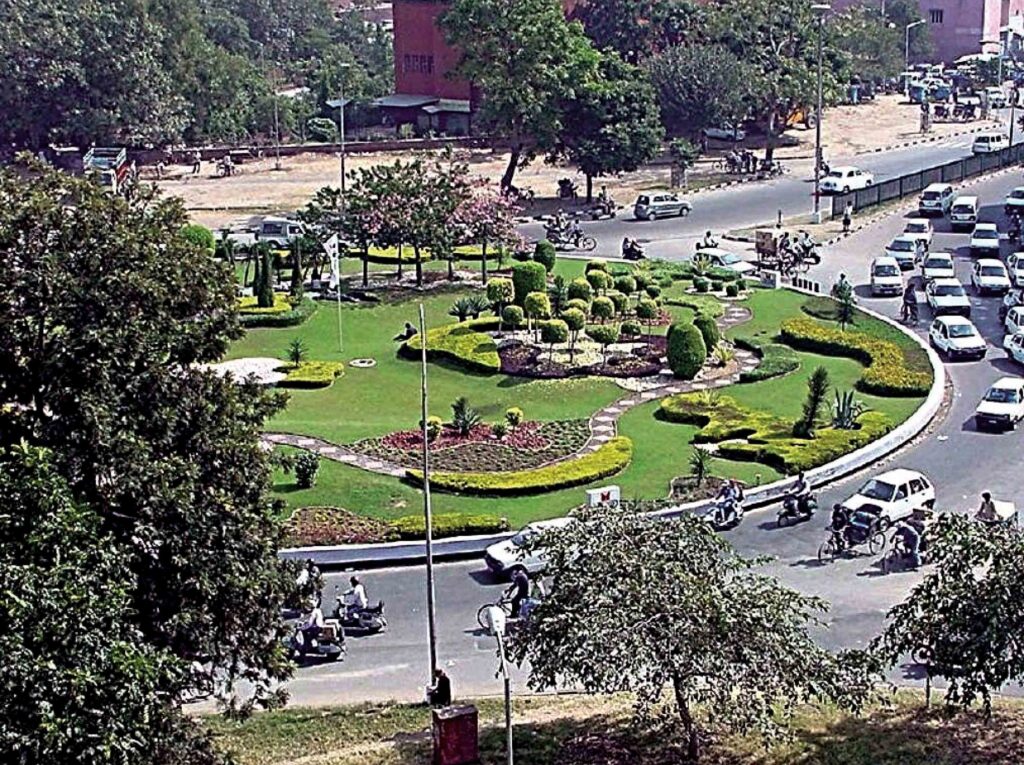INDIA is fast heading towards a 50:50 rural-urban distribution of population slated for the middle of the present century. Tamil Nadu has already achieved this and other states would soon follow. Such countrywide distribution would mean that in another three-four decades India’s urban dwellers would exceed the combined population of the US and Europe. These habitats are not mere buildings and amenities, but meant for people with flesh and blood to live and work. Despite this daunting prospect, there is no credible urban governance framework with philosophical underpinning and political thought process to handle this humongous ‘urban upsurge’. The result is an appalling condition of infrastructure and services housing, water, energy, roads, sanitation, transport in almost all cities and towns of India.
Instead of seriously addressing this governance issue, the Narendra Modi government has announced a physical agenda of building 100 ‘smart cities’. Accordingly, the Union Budget has allotted Rs 7,060 crore as start-up capital to build these on the outskirts of large cities. The projects will be in PPP mode and FDI norms have been relaxed to attract foreign investors. These new cities will be built with GIS-based town planning, using the latest technology and infrastructure. Following suit, N Chandrababu Naidu, Chief Minister of the truncated but new Andhra Pradesh, has announced three mega cities and 14 smart cities. Japan and China are being wooed to heavily invest in these ventures.
But as yet there is no firm definition of smart cities. The broad agreement is that these are green-field habitats that mobilise information and communication technologies to deliver better services, reduce carbon footprint, create sustainable environments and improve living conditions and are intelligent. Many cities abroad, realising that existing urban systems cannot cope with new challenges, have already taken this route. But India has not even started.
Take, for instance, Chandigarh, the capital city of Punjab and Haryana, which was India’s first experience in planned urbanisation. The concept of the ‘City Beautiful’ was spelt out in 1959 by the expatriate architect, Le Corbusier: “When the following operation has been started in the city; obtaining the money, buying of the necessary land, framing of the first by-laws permitting the beginning of construction, selling of the first plot, arriving of the first inhabitant, etc., etc., a phenomenon is born: it is the appreciation in the value of the piece of land. A game, a play, has begun. One can sell cheaply or at a high price; it depends on the kind of tactics and the strategy employed in the operation. One phrase must be affirmed: good urbanisation makes money; bad urbanisation loses money.”
Corbusier’s concept of Chandigarh was for self-financing purposes, similar to the PPP idea for smart cities now. Pursuit of this concept made Chandigarh an elitist and exclusive habitat with no space for low-income groups and labourers who built the city, resulting in mushrooming slum settlements! A lot of mid-course corrections were done to make the city reasonably inclusive when I was the city’s administrator in the mid to late 1970s. Yet the city lacks community spirit so essential for a lively urban habitat. Even now this ‘symbol of modern India’, as described by Pandit Nehru, is nowhere near being a smart city.
URBANISATION is basically movement of population from rural to urban areas and the resulting increasing proportion of a population residing in urban places. This is a two-way process as it involves not only movement from villages to cities and change from agricultural occupation to business, trade, service and profession, but also change in the migrant’s attitudes, beliefs, values and behaviour patterns. Facilities like education, healthcare, employment avenues, civic facilities and social welfare are the reasons that attract people to urban areas.
Despite the looming tectonic shift towards urban habitat, this nation does not have an inclusive urban philosophy and political thought. Since urbanisation concerns people, their lives and livelihood, it should have a distinct character, culture and ethos. That is ‘Urbanism’ as defined by author Jeb Brugmann (2009): “It is a way that builders, users and residents co-design, co-build, co-govern and combine their activities to support ways of production and living that develop their shared advantage.” India, being a low-income economy dominated by the informal sector, urbanism should be the guiding philosophy.
‘Urban shared advantages’ are the four basic elements that make cities ‘magnets of productivity and prosperity’ economies of density, scale, association and extension. Density is the concentration of people and their activities that enhances the sheer efficiency by which an economic activity could be pursued. Scale is the increase in the volume of any particular opportunity, producing what we call ‘economies of scale’ that makes activities attractive or services profitable. The scale and density of interactions among people with different interests, expertise and objectives then combine to create the third basic element economy of association that exponentially increases the variety of ways and efficiency with which people can organise, work together, invent solutions and launch joint strategies for urban advantage. These three economies of density, scale and association create the economies of extension, which is the ability to link the unique economic advantages of one city with those of other cities to create new strategies for advantage in the country and the world.
URBANISATION in India does not get the leverage of these advantages to the full because it does not practise urbanism of inclusive and shared development. When communities self-organise ways of designing buildings, organising space, arranging urban functions and governing development in wards and zones to make specific kinds of production very efficient, and specific kinds of living very affordable and productive, this is called “community-based urbanism”.

In urbanism, the focus shifts from opportunistic development of individual plots, buildings and gated settlements to community-disciplined development of wards and zones with specialised strategies to secure social and economic advantage in the city. The informal sector, that contributes over 80 per cent of urban employment, now in the periphery of urban planning, would be mainstreamed and be at the core of such forms of urbanism.
The advantage of this approach is that its production of many micro and small-scale units and the mixing of units of different sizes to co-locate residential, commercial, and small manufacturing functions makes it accessible to low-income populations, and it creates efficient, productive, and governable units of the growing city. The disadvantage is that the approach tends to be based on incremental, cash flow-based building, and is, therefore, investment-poor. But this is not irresolvable.
As of now, as cities grow, inclusive urbanism gets abandoned, giving place to commercial commodification producing, selling and purchasing generic built units (square foot), adopting industrial batch production approach. This is the hallmark of today’s technology/globalisation-driven urbanisation, which is both exclusive and expansionist, keeping a majority of citizens away from the ‘development stream’ and allocating scarce economic and environmental resources to the select few. This became a common phenomenon in urban India under UPA rule and it appears as if the new government is also moving in that direction, only much faster.
Urbanisation sans urbanism makes cities ‘brick and mortar construction’ entities rather than vibrant human settlements. Hence, the present disjointed and disoriented urban governance system that has been the bane of sustainable and equitable spatial planning and development. Cities and urban habitats, being ‘engines of economic growth’, need vibrancy if democratic and participatory decision-making is to take place. For this to happen, a philosophy of urbanism should be accompanied by a political process that is democratic, decentralised and participatory.
This was the intention of the 74th Constitutional Amendment Act (1992), enacted to make Urban Local Bodies (ULBs) look inward and build on their inherent capacities, both financial and technical, instead of being mere ‘wards’ of the State governments. Despite funded ‘reforms’ under JNNURM, this has not happened because an innovative brand of ‘urban politics’ has not emerged to take this agenda forward. Such politics, that could urge governance reforms to give more autonomy, financial powers and professional capacity to ULBs, is an urgent imperative if urban sustainability and quality of life are to improve. Evolving such a governance framework through nationwide consultation should precede any major urban development initiative. Without this framework, building smart cities as green-field enclaves on city outskirts poses the danger of turning into expensive and exclusive gated communities. Cape Town in South Africa stands out as the stark reminder of this ‘apartheid’ type of city development.
I have seen Cape Town. In the sprawling ghetto of Khayelitsha, on the city’s eastern edge, barefoot children play on the banks of an open sewer, while cows roam next to an overflowing rubbish heap. A family of seven with girls and children has just a tiny cabin with two beds between them. They can’t sleep at night because of the smell and the children are perpetually sick. “When it rains, the public toilets overflow into our ‘living rooms’ and water comes in through the ceiling and electricity stops working,” was the wailing of the inhabitants. This is the ‘hell city’ of Cape Town and most low-income/poor localities in Indian cities resemble this!
Twenty minutes’ drive to the west of Cape Town is ‘paradise city’, emerging as the World Design Capital overlooking the deep blue Atlantic Ocean. The setting sun over the city, repeatedly adjudged among the world’s ‘best places to live’, casts a golden glow across its super-rich villas’ seamless planes, their surfaces sparkling with diamond dust mixed into the white concrete. Bungalows, with bath tubs carved from a solid block of marble, are ringed by an electric fence and secured by guards menacingly toting loaded guns! Apartheid may have ended in South Africa, but in Cape Town the sense of apartness remains as strong as ever.
This is the trend of recent urbanisation in India with private realtors promoting high-flying ‘gated enclaves/settlements’ in and around cities with security guards and CCTVs! Gurgaon is the testimony to this unsustainable model that I desperately tried to prevent during my brief stint as Chief Administrator, Haryana Urban Development Authority, in the early 1980s.
THE question is whether this gated culture is being institutionalised through government-partnered smart city projects. In the Indian context, due to skewed urban governance and lack of urban politics, existing cities have already been divided into four quadruples of unequal parts bungalow-dwelling rich; gated apartment-living upper-middle; flat occupying lower-middle; and slum-living poor. There is a far more disturbing fifth category the ‘homeless’ living on pavements and in sewerage pipes!
Smart cities, as conceived, would only worsen this segregation and could turn out to be expensive and exclusive real estate. The informal sector, that forms the lifeline of an Indian city, will find no place in these smart brick and mortar entities. In a populous subcontinent like India, cities cannot be only about showcasing technology. Fundamentally, they have to be humane, inclusive, equitable and livable. Ensuring this should be the top priority of the Modi government. Smart cities can follow.
The writer is a former Army and IAS officer. Email: deva1940@gmail.com





























































